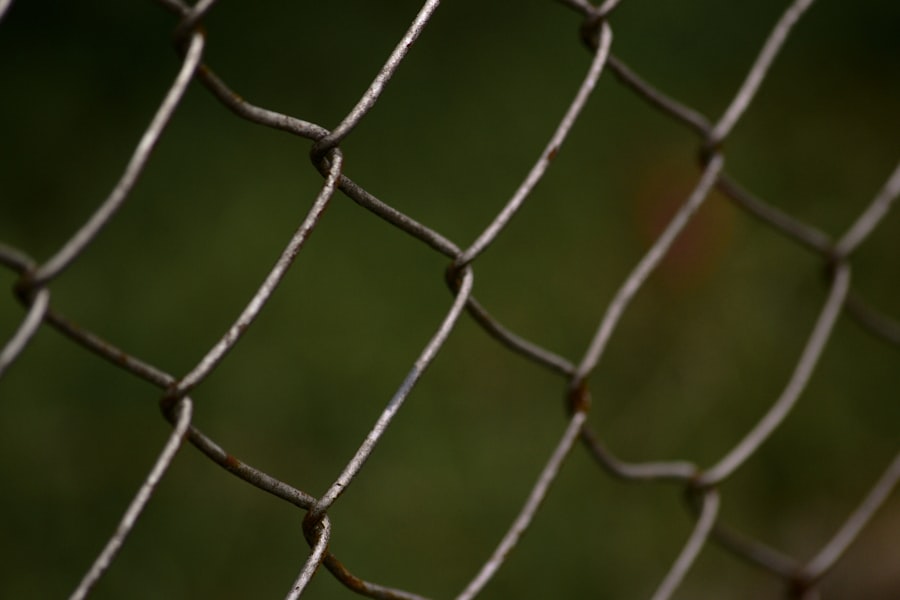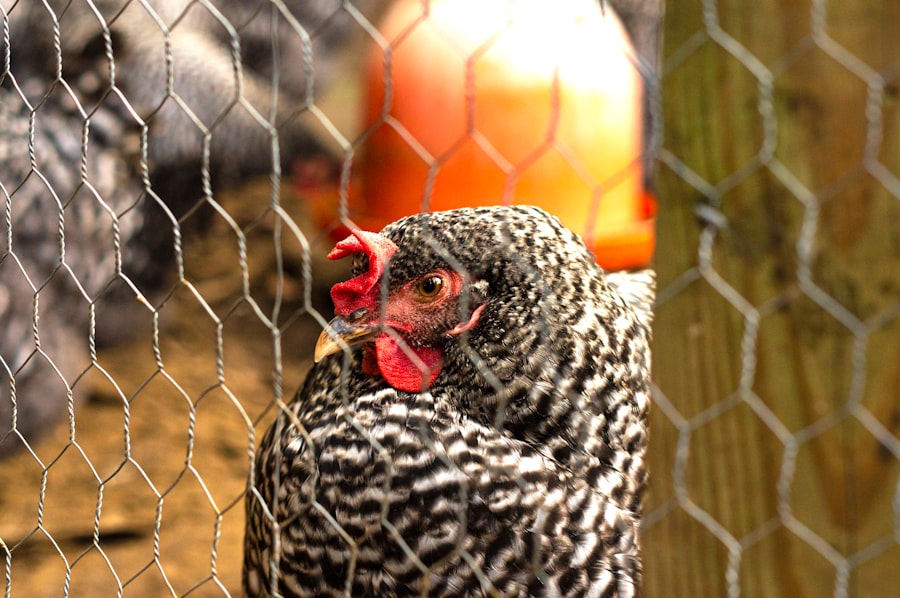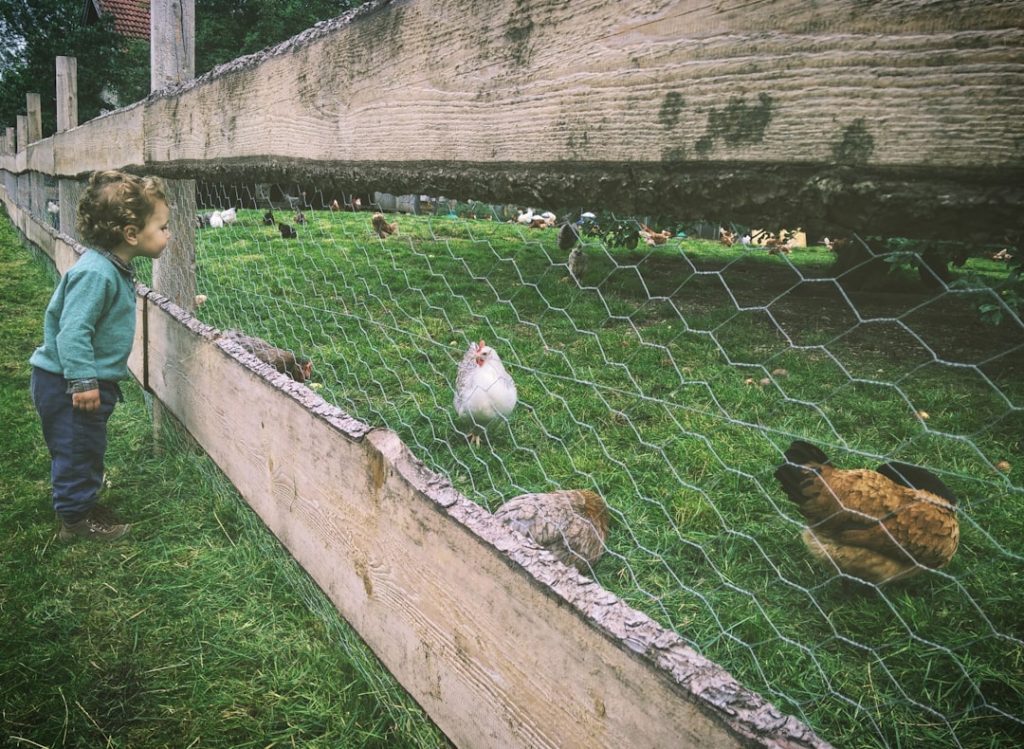Living in close proximity to neighbors can present both benefits and challenges. One common issue that arises between neighbors is boundary disputes, particularly concerning pets and wildlife. Animals, both domestic and wild, do not recognize property lines and may cross onto neighboring properties, potentially causing conflicts between residents.
This situation can lead to tension and strained relationships between neighbors, making it important to address such issues with empathy and understanding. When addressing boundary disputes related to pets and wildlife, it is crucial to acknowledge that both parties may have valid concerns. For instance, one neighbor might worry about their garden being damaged by a neighbor’s dog, while the pet owner may be concerned about their pet’s safety if allowed to roam freely.
Approaching the issue with an open mind and a willingness to find a mutually beneficial solution is essential. Understanding the perspectives of all involved parties can facilitate finding common ground and working towards a resolution that addresses everyone’s concerns.
Table of Contents
- 1 Communicating with the Neighbor:
- 2 Creating Physical Barriers:
- 3 Using Natural Deterrents:
- 4 Implementing Scare Tactics:
- 5 Seeking Legal Recourse:
- 6 Being Mindful of the Environment:
- 7 FAQs
- 7.1 What are some effective ways to keep the neighbors’ chickens out of my yard?
- 7.2 Is it legal to keep the neighbors’ chickens out of my yard?
- 7.3 What should I do if the neighbors’ chickens continue to enter my yard despite my efforts?
- 7.4 Are there any potential health risks associated with the neighbors’ chickens entering my yard?
- 7.5 What are some humane ways to keep the neighbors’ chickens out of my yard?
Key Takeaways
- Understanding the Issue: Identifying the root cause of the conflict with the neighbor’s property is crucial for finding a resolution.
- Communicating with the Neighbor: Open and respectful communication with the neighbor can help in finding a mutually beneficial solution to the problem.
- Creating Physical Barriers: Installing fences or other physical barriers can help in preventing the neighbor’s intrusion onto your property.
- Using Natural Deterrents: Planting thorny bushes or using natural repellents can discourage the neighbor’s pets or wildlife from entering your property.
- Implementing Scare Tactics: Using motion-activated lights, sprinklers, or noise devices can startle and deter unwanted animals from entering your property.
Communicating with the Neighbor:
Approaching the Conversation
When addressing boundary disputes related to pets and wildlife, effective communication is crucial. It’s essential to approach the conversation with empathy and a willingness to listen to the concerns of the other party. Initiating a conversation with your neighbor about the issue should be done in a calm and respectful manner.
Avoiding Escalation
Avoid approaching the situation with anger or hostility, as this can escalate tensions and make it more difficult to find a resolution. Instead, express your concerns clearly and concisely, while being open to hearing the other person’s perspective.
Finding a Collaborative Solution
It’s essential to approach the conversation with a collaborative mindset, seeking to find a solution that works for both parties. This may involve setting clear boundaries for pets, such as installing a fence or using leashes, or finding compromises that address the concerns of both neighbors. By communicating openly and respectfully, it becomes easier to find common ground and work towards a resolution that benefits everyone involved.
Creating Physical Barriers:

One effective way to address boundary disputes related to pets and wildlife is by creating physical barriers that prevent animals from wandering onto neighboring properties. This can include installing fences or gates that clearly delineate property lines and prevent pets from roaming freely. When considering physical barriers, it’s important to take into account the specific needs of the animals involved, as well as any local regulations or restrictions regarding fencing.
Fences can be an effective way to create a clear boundary between properties, providing a visual barrier that helps prevent pets and wildlife from crossing over. Additionally, gates can be used to control access to certain areas of the property, allowing for flexibility in managing the movement of animals. When considering physical barriers, it’s important to communicate with your neighbor and ensure that any installations are done in a way that is respectful of their property and concerns.
In addition to fences and gates, there are other physical barriers that can be used to address boundary disputes related to pets and wildlife. For example, hedges or shrubs can be planted along property lines to create a natural barrier that prevents animals from crossing over. These natural barriers can also provide additional benefits, such as enhancing privacy and adding aesthetic appeal to the property.
When considering physical barriers, it’s important to take into account the specific needs of the animals involved, as well as any local regulations or restrictions regarding landscaping.
Using Natural Deterrents:
In addition to physical barriers, natural deterrents can be used to discourage pets and wildlife from wandering onto neighboring properties. This can include using plants or other natural elements that are unappealing or intimidating to animals, helping to keep them within their own boundaries. When considering natural deterrents, it’s important to choose methods that are safe for both animals and the environment, while also being respectful of neighboring properties.
One common natural deterrent is the use of certain plants that are known to repel animals, such as lavender or marigolds. These plants emit scents that are unappealing to many animals, helping to keep them away from certain areas of the property. Additionally, certain types of mulch or gravel can be used to create barriers that are uncomfortable for animals to walk on, discouraging them from crossing over into neighboring properties.
Another natural deterrent that can be effective in addressing boundary disputes related to pets and wildlife is the use of sound or motion-activated devices. These devices can emit sounds or flashes of light when animals approach, scaring them away from certain areas of the property. When using these devices, it’s important to ensure that they are used in a way that is safe and respectful of neighboring properties, while also being mindful of any local regulations or restrictions regarding their use.
Implementing Scare Tactics:
Scare tactics can be an effective way to deter pets and wildlife from wandering onto neighboring properties. This can include using visual or auditory stimuli that startle animals and encourage them to stay within their own boundaries. When implementing scare tactics, it’s important to choose methods that are safe for both animals and the environment, while also being respectful of neighboring properties.
One common scare tactic is the use of visual deterrents, such as scarecrows or reflective tape, which can startle animals and discourage them from crossing over into neighboring properties. Additionally, certain types of lighting or motion-activated devices can be used to create sudden flashes of light that scare animals away from certain areas of the property. When using visual scare tactics, it’s important to ensure that they are used in a way that is safe and respectful of neighboring properties, while also being mindful of any local regulations or restrictions regarding their use.
In addition to visual scare tactics, auditory stimuli can also be used to deter pets and wildlife from wandering onto neighboring properties. This can include using devices that emit loud noises or sudden bursts of sound when animals approach certain areas of the property. When using auditory scare tactics, it’s important to ensure that they are used in a way that is safe and respectful of neighboring properties, while also being mindful of any local regulations or restrictions regarding their use.
Seeking Legal Recourse:

When Communication Fails
In some cases, boundary disputes related to pets and wildlife may require legal intervention to find a resolution. If communication with your neighbor has been unsuccessful in addressing the issue, it may be necessary to seek legal recourse to protect your property and rights. When considering legal action, it’s essential to consult with a legal professional who can provide guidance on the best course of action for your specific situation.
Legal Recourse Options
Legal recourse may involve taking legal action against your neighbor for damages caused by their pets or wildlife, or seeking an injunction to prevent them from allowing their animals to wander onto your property. It’s crucial to gather evidence and documentation of any damages or disturbances caused by your neighbor’s pets or wildlife to support your case. Additionally, it’s essential to be prepared for potential legal costs and time commitments associated with seeking legal recourse.
A Fair and Respectful Approach
When considering legal recourse, it’s vital to approach the situation with a willingness to find a fair and respectful resolution. Legal action should be seen as a last resort after all other options have been exhausted, and should be pursued with the goal of finding a solution that benefits both parties involved. By seeking legal recourse in a thoughtful and considerate manner, it becomes possible to protect your property and rights while also working towards a resolution that is fair and respectful.
Being Mindful of the Environment:
When addressing boundary disputes related to pets and wildlife, it’s important to be mindful of the environment and the impact of any actions taken on local ecosystems. This includes considering the potential effects of physical barriers, natural deterrents, scare tactics, and legal recourse on wildlife habitats and local ecosystems. It’s essential to approach the issue with a commitment to finding solutions that are environmentally responsible and sustainable.
When implementing physical barriers or natural deterrents, it’s important to consider their potential impact on local wildlife populations and habitats. For example, fences or gates should be installed in a way that minimizes disruption to wildlife movement patterns and habitats. Additionally, natural deterrents should be chosen with consideration for their potential effects on non-target species and local ecosystems.
In addition to considering the impact on local ecosystems, it’s also important to be mindful of any local regulations or restrictions regarding the use of physical barriers, natural deterrents, scare tactics, and legal recourse. This may include obtaining permits for certain installations or activities, as well as complying with any laws or regulations aimed at protecting local wildlife and ecosystems. In conclusion, addressing boundary disputes related to pets and wildlife requires empathy, effective communication, and a commitment to finding solutions that are fair and respectful.
By understanding the perspectives of both neighbors and approaching the issue with an open mind, it becomes possible to find common ground and work towards a resolution that benefits everyone involved. Whether through physical barriers, natural deterrents, scare tactics, legal recourse, or mindful consideration of the environment, there are various approaches that can be taken to address boundary disputes in a way that is responsible and sustainable.
If you’re looking for ways to keep your neighbor’s chickens out of your yard, you may also be interested in learning more about building a farmhouse chicken coop. Check out this article for tips and ideas on creating a secure and comfortable space for your own chickens.
FAQs
What are some effective ways to keep the neighbors’ chickens out of my yard?
Some effective ways to keep the neighbors’ chickens out of your yard include installing a fence, using chicken wire or netting, using motion-activated sprinklers, and using natural deterrents such as citrus peels or coffee grounds.
Is it legal to keep the neighbors’ chickens out of my yard?
The legality of keeping the neighbors’ chickens out of your yard may vary depending on local ordinances and regulations. It’s important to check with your local authorities to ensure that you are within your rights to take measures to keep the chickens out of your yard.
What should I do if the neighbors’ chickens continue to enter my yard despite my efforts?
If the neighbors’ chickens continue to enter your yard despite your efforts, it’s best to have a polite and respectful conversation with your neighbors to address the issue. You can discuss potential solutions and come to a mutual agreement on how to keep the chickens out of your yard.
Are there any potential health risks associated with the neighbors’ chickens entering my yard?
There may be potential health risks associated with the neighbors’ chickens entering your yard, such as the spread of diseases or parasites. It’s important to take measures to keep the chickens out of your yard to minimize these risks.
What are some humane ways to keep the neighbors’ chickens out of my yard?
Some humane ways to keep the neighbors’ chickens out of your yard include using natural deterrents, providing alternative areas for the chickens to roam, and working with your neighbors to find a mutually beneficial solution. It’s important to avoid using harmful or inhumane methods to keep the chickens out of your yard.
Meet Walter, the feathered-friend fanatic of Florida! Nestled in the sunshine state, Walter struts through life with his feathered companions, clucking his way to happiness. With a coop that’s fancier than a five-star hotel, he’s the Don Juan of the chicken world. When he’s not teaching his hens to do the cha-cha, you’ll find him in a heated debate with his prized rooster, Sir Clucks-a-Lot. Walter’s poultry passion is no yolk; he’s the sunny-side-up guy you never knew you needed in your flock of friends!







